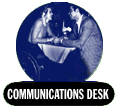
The National
Spinal Cord
Injury Association

![]()
Resource Center
What to do about Spasticity
![]()
Robert R. Young, MD
Spasticity is seen in most persons with spinal cord injury: it's the rule. This article will help you understand spasticity, what trouble it causes and what, if anything, to do about it.
Definitions:
Spasticity is a
general term used to describe the various sorts of
hyperactive, stiff muscles--with increased tone and
increased reflexes--seen in persons who have had damage
to their central nervous system. That means damage to the
spinal cord or brain. Damage to the muscles themselves or
to the peripheral nerves in the limbs does not produce
spasticity. In fact, peripheral nerve damage produces the
opposite of spasticity, a condition known as 'flaccidity'
which means loose, flabby muscles. As you will learn
below, such damage is actually produced by physicians to
treat spasticity.
The type and amount of spasticity is determined by the location and size of the damage, not by which of the things listed above actually caused the damage. Spasticity takes many days or even weeks to develop and becomes maximal a long time after the damage occurs. Then it usually remains constant but in many people with spinal cord injury, spasticity becomes less prominent after a decade or two.
When damage to the central nervous system produces spasticity, it also produces weakness, loss of dexterity or other trouble controlling the muscles. These are called paresis or palsy; they produce almost all the handicap or functional deficit. After all, it's trouble using the limb that really bothers the person, not the increased reflexes. As outlined below, spasticity is certainly troublesome and deserves treatment, but when it is treated, the person's arm or leg still won't work right because the damage to the central nervous system has disconnected the muscles from the parts of the brain that formerly controlled them. Unfortunately, the central nervous system doesn't reconnect itself.
Types of Spasticity:
There are different
varieties of spasticity, depending on where the damage
was. What they have in common is that the affected
muscles contract involuntarily (the person cant relax
them) so they are stiffer and less flexible than normal
when they are stretched (increased tone) and the
automatic (involuntary) reflexes that regulate their
activity are hyperactive so tapping with the rubber
hammer or scratching the sole of the foot produces an
abnormally large reflex muscle contraction.
Spinal spasticity, seen with damage to the cord, affects both sides of the body. If only the legs are affected, it's called paraplegia. If legs and arms are affected, it's called quadriplegia or tetraplegia. Whenever the arms are affected, they also are flexed but, in this case, the legs are also always flexed; that is, the knees and hips are bent. This may suit people sitting in a wheelchair but they certainly can't walk with flexed legs whereas the hemiplegic patient can often walk, supporting his/her weight on the stiffly extended (i.e., non-bent) spastic leg.
With spinal spasticity, one of the most unpleasant aspects is the tendency for spasms of the legs to occur, either spontaneously, following trivial stimuli such as light touch to the feet or with conditions such as a full bladder or bowel which would be uncomfortable or painful if the spinal cord injured individual could feel it. These involuntary spasms are uncomfortable, wake people up at night, knock over nearby items and throw them out of their wheelchairs.
Ankle clonus can occur with either type of spasticity. This refers to the involuntary rhythmic bouncing of the heel off the floor when the person is seated with the foot on the floor. It may be embarrassing but is usually of little consequence otherwise.
Should Spasticity Be
Treated?
Not necessarily. The
correct answer depends on the extent to which spasticity
is bothering the person, what treatments are available
for that particular person's type of spasticity and what
the risk/benefit ratio of the treatment is. If the spasms
are interfering with eating, sitting, transferring,
walking, sleeping and so on, they should be treated. On
the other hand, just because reflexes are hyperactive
does not justify making them less active; who cares if
someone's knee gives a bigger or smaller jerk when it's
hit with the rubber hammer?
Why not treat all spasticity? First, it's not worth taking pills or having an operation if the spasticity isn't really bothering you. Second, spasticity may actually be helpful in certain ways. Even spinal spasticity, which doesn't let the person stand, can be used to flex the legs so people can put their pants on. The spasms or longer lasting involuntary muscle contractions may help keep the muscle bulk up, improve circulation or reduce loss of calcium from bones.
In summary, the person with spasticity, his/her family and the physician must sit down and discuss why the spasticity should be treated, what therapeutic options exist, what the reasonable (i.e., attainable) goals of treatment are, how much effort/time/money will, in all honesty, be necessary and whether or not the person(s) involved really can be expected to do it all. If the answer is positive, let the treatment begin.
Treatment Options in
General:
First, even before
this group meeting to discuss options, it's necessary to
be certain the spasticity isn't being worsened or
maintained by some treatable condition such as a bladder
infection, ingrown toenail, kidney stone or other
unrecognized "painful" focus which the person,
because of the spinal cord injury, can't feel.
Other scenarios to rule out include failure to take anti-spastic medications the person was supposed to be taking. Also, it has recently been recognized that certain new medicines, such as Selective Serotonin Reuptake Inhibitors given to treat depression, seem to counteract the good effects of baclofen (Lioresal) which is often used as a long term treatment for spinal spasticity.
Finally, even before considering pills or surgery, the spastic muscles should be stretched several times every day. Muscle stretch, done actively or passively, is an extremely effective treatment for spasticity, and is too often overlooked.
Medical Therapies:
There are four
medicines, three old and one new, which, when taken by
mouth, can be used to treat spasticity. One of them,
dantrolene (Dantrium), isn't really very useful because
it works by weakening all muscles including the spastic
ones. Not many patients benefit from that. It also may
cause liver failure.
Diazepam (Valium) reduces spasticity in people with spinal cord lesions of all kinds. As you might expect, it may cause sedation but many patients can take large amounts of it without much sleepiness if they start with small doses and slowly increase the amount they take. Diazepam doesn't increase strength of spastic muscles and may even make them a little weaker.
Baclofen (Lioresal) has long been the mainstay of the treatment of spasticity due to spinal lesions--unfortunately, when taken by mouth, it doesn't help with spasticity caused by strokes or other lesions of the brain. It certainly reduces the number of spasms and the stiffness of the legs in persons with spinal cord injuries. It is usually well tolerated and rarely causes trouble with the liver, kidneys and so on. It may produce drowsiness, albeit less than diazepam, but that is usually not a problem if the dose is increased slowly. Like diazepam, it does not increase muscle strength and may weaken spastic muscles.
A new medicine, tizanidine (Zanaflex), will soon be available.
For the past 15 years, it has been used successfully in Europe to treat spasticity and it should soon be approved by the FDA for use in the US. It also is effective in reducing the number and severity of muscle spasms and increased muscle tone but, remarkably, does not seem to weaken the muscles. Its major side effect is dry mouth. It may produce some tiredness but is much less sedating than diazepam.
Each of these four drugs acts on a different neurochemical mechanism so that, if a person needs more than one, they work well together. That is, their good effects tend to add but their side effects don't. Each of these medicines will help some persons more than others and, similarly, some persons are troubled by the side effects of one more than another. Hence, we need more choices of medical therapy than we have. Also, the optimal amount of each varies from one person to another and too much of almost any medicine may be worse than not enough. Therefore, the person with spasticity should work closely with his/her physician to get the best long term effects.
Surgical Therapies:
Once in a long
while--much less often than previously--a person with
very severe spasticity may require a major surgical
procedure. To reduce the hyperactive reflexes,
neurosurgeons can cut nerves going to and from the
spastic muscles. Sometimes it's best to do this where the
nerves enter the spinal cord (dorsal root entry zone
lesions) or inside the spinal column, just before they
enter the cord (selective dorsal rhizotomies). At other
times, orthopedic surgeons may cut spastic muscles or cut
or lengthen their tendons. These are all major surgical
procedures with the risks of surgery, anesthesia and so
on. Naturally they are irreversible, so they should only
be undertaken after careful thought and consultation with
experts.
Less destructive surgery may also be useful. Electrical stimulators with batteries implanted under the skin can be used to activate the spinal cord itself (dorsal column stimulation), but that has not proven to be very useful in the treatment of spasticity.
A pump can also be implanted under the skin to slowly infuse baclofen (Lioresal) directly into the spinal fluid that bathes the spinal cord. This produces a much higher concentration of baclofen at the place it works in the spinal cord than can be achieved by taking pills and, at the same time, there is a very low concentration of baclofen in the blood so the usual side effects are eliminated.
Hands-On Therapies:
In addition to muscle
stretching which was already recommended, massage,
passive range of motion, heating, cooling, vibration and
other modalities used during important hands-on treatment
are employed by therapists of various kinds to help
persons with spasticity. Some are clearly effective but
others are of questionable value. As a rule, if they make
the affected person feel better and are not too
expensive, why not employ them?
Summary:
This review should
help people with spasticity understand it a little better
and plan, with their medical team, what could be and
should be done about it. For the best outcome, there is
no substitute for careful and detailed communication
among all concerned. This obviously requires expertise on
the part of the physician but it also requires him/her to
spend the time needed to find out what actually is
bothering the person with spasticity and, if treatment
seems indicated, to plan reasonable goals.
Every patient is unique with different problems, goals and needs. Very seldom is spasticity successfully treated simply by taking a couple of pills every day. It is a lifelong problem that requires close cooperation between the affected person and his/her physician. There are various levels of treatment as noted above and the simplest, least invasive approach which accomplishes the desired goals is obviously best. For most people, medical therapy is the way to go.
We all eagerly await the availability of the new drug, tizanidine (Zanaflex). Spasticity often needs to be treated and everyone with spasticity, particularly of spinal origin, deserves access to new and better treatments. The general public and our legislators may not always understand how much trouble and misery are caused by spasticity; it is the job of all of us to educate them so they will do what is necessary for us to have quicker access to better therapies.
References:
For more detailed
technical discussions of spasticity, the following will
provide an entry into the medical literature.
Young RR (Ed.). Role of tizanidine in the treatment of spasticity. Neurology 1994; 44 (supplement 9).
Young RR, Woolsey RM (eds.). Diagnosis and Management of Disorders of the Spinal Cord. Philadelphia:WBSaunders, 1995.
Robert R. Young, MD
Department of Neurology
105 Irvine Hall
University of California
Irvine, CA 92697-4275
fax (714) 824-2076
Copyright ©1995-98 NSCIA. All rights reserved.




